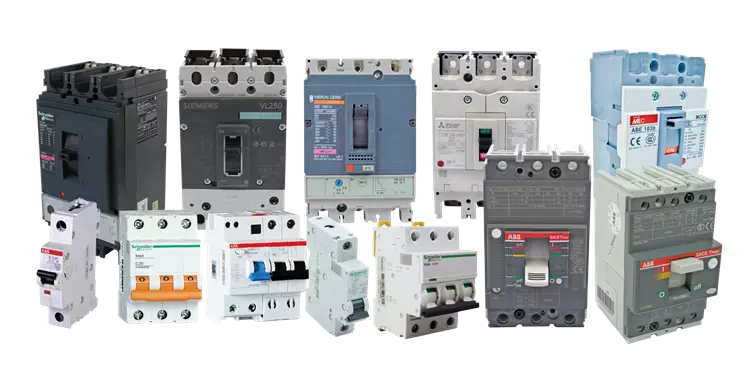Arc Fault Circuit Interrupter (AFCI) Home Protection
An Arc Fault Circuit Interrupter (AFCI) protects against fire hazards. AFCIs are designed to detect and respond to potentially dangerous electrical arc faults, protecting homes from electric fires.

What do AFCIs do?
Modern electrical demands overwhelm electrical systems of many existing homes, putting them at risk of arc faults and arc-induced fires. The U.S. Consumer Product Safety Commission estimates that AFCIs could prevent more than 50% of the 50,000 annual electrical fires. You probably have a smoke alarm, carbon monoxide detector, and locks on doors – think of an AFCI as another important and necessary device to keep your home safe.
AFCIs remove hazardous arcing conditions before a fire can begin by continuously monitoring circuits for unsafe electrical abnormalities. When an arc is detected, the AFCI immediately discontinues the flow of electricity through the circuit. AFCI protection is typically provided by a specific circuit breaker at the panel, but there are different types of AFCIs for installation around the home – including breakers and outlets.
What is an arc fault?
An arc fault is an unintended arc created by current flowing through an unplanned path, and is generally caused by damaged and deteriorating electrical wiring and devices, or overburdened outlets and circuits. Arcing creates high-intensity heating (> 10,000°F) at the point of the arc, easily igniting surrounding material, such as wood framing or insulation.
How is the AFCI requirement met?
Most often, we upgrade the circuit breaker to comply with the AFCI requirement. In some cases, due to an outdated panel type or brand, or budgetary restriction, an AFCI receptacle may be used. Our preference is to upgrade at the circuit breaker to ensure AFCI protection for the complete length of the circuit (this includes the wires from the panel to the first outlet).
If an AFCI receptacle is used to meet the requirement, the first receptacle in the modified circuit must be discovered and the AFCI receptacle is installed into the first receptacle opening. That receptacle protects the rest of the circuit; however, it must be visible and accessible without obstruction – such as a piece of furniture blocking it.
When are AFCIs required?
AFCIs are a required upgrade by the National Electric Code in many circumstances. When modifications are made to circuits, including replacing a receptacle, adding a switch or light fixture, the affected circuit may require upgrading.
Where should AFCIs be installed?
AFCIs should be installed in all areas of the home on all 15 and 20 amp 120 volt openings – including receptacle outlets, devices including switches, lighting outlets, recessed can lights, hard wired smoke detectors or other code related outlets.
According to current code, there are a few locations where AFCIs are not required:
- Unfinished Spaces / Storage rooms / Attics / Garages
- Furnaces, Water Heaters, Boilers, Air Conditioners (if hard-wired)
- Exterior Receptacles and Lighting
- Bathroom Receptacles and Lighting
What unexpected results could occur from AFCI installation?
Newly installed AFCIs can expose incorrect wiring that was working electrically prior to installation. Items such as improperly crossed neutral conductors or neutral to ground-faults will cause AFCIs to trip, since the AFCI monitoring component will not function unless the outgoing current flow is congruent with the return flow. If AFCI upgrades are required, additional troubleshooting work may result due from issues resulting in AFCI nuisance tripping.
AFCIs work by monitoring electrical sine waves, and use an algorithm to decipher if harmonic disruptions on the AC sine wave mimic results typical of arcing conditions on the circuit. Overall wattage of dimmed loads, or too many CFLs and LEDs can introduce harmonics on the sine wave, which can mimic the presence of an arcing condition and cause AFCI breakers to nuisance trip.
Older appliances, especially fans, vacuum cleaners, and microwaves can commonly cause tripping as well. Occasionally, even new appliances trip AFCIs due to an electrical defect that will not present itself on a non-AFCI circuit. Replacing the faulty appliance is the only remedy in this rare situation. Additionally, disruptions occurring from the electrical service provider (e.g. Xcel) can also cause nuisance tripping. A loose connection at the transformer, a transformer having signs of failure, or a bad splice at the point of connection at the house can all cause conditions that will trip AFCIs without predictable order.
